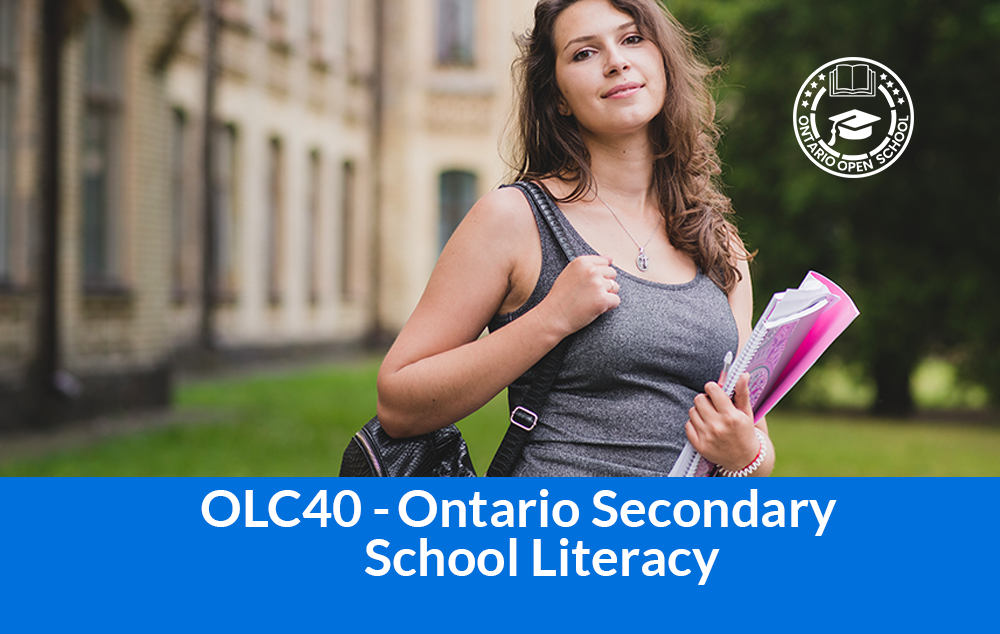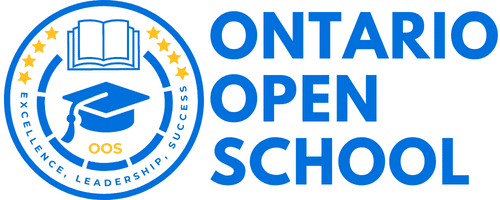- info@ontarioopenschool.com
- 647-494-4499
-
Unit 100 - 29 Gervais Drive, North York, ON.
M3C 1Y9
Copyright 2024 Ontario Open School Inc. All Rights Reserved.
This course is designed to help students acquire and demonstrate the cross-curricular literacy skills that are evaluated by the Ontario Secondary School Literacy Test (OSSLT). Students who complete the course successfully will meet the provincial literacy requirement for graduation. Students will read a variety of informational, narrative, and graphic texts and will produce a variety of forms of writing, including summaries, information paragraphs, opinion pieces, and news reports. Students will also maintain and manage a portfolio containing a record of their reading experiences and samples of their writing. Eligibility requirement: Students who have been eligible to write the OSSLT at least twice and who have been unsuccessful at least once are eligible to take the course. (Students who have already met the literacy requirement for graduation may be eligible to take the course under special circumstances, at the discretion of the principal.)
Unit Order | Unit Name | Suggested Time |
|---|---|---|
| Unit 1 | Interpreting and Using Narrative Forms (Units Covered: A,B,C) The unit builds on diagnostic and formative assessments of reading and writing to evaluation of reading and writing. Students examine their reading habits, strategies, and attitudes, and review and apply stages of the writing process to produce required forms of writing. Students will also explore the different types of narrative forms. They will read a variety of texts that encompass many of these different forms of narratives. | 25 hours |
| Unit 2 | Persuasive Writing and Development ( A,B,C) Students will be presented a variety of texts to read, and asked to pay attention to the format of writing both persuasive paragraphs and essays. Students will be taken step by step through the writing process (brainstorming, outlines, and drafting) to help them with organizing and editing their ideas before presenting their positions on a given subject. | 25 hours |
| Unit 3 | Interpreting Information and Instructional Texts (A,B,C) Students will be introduced to various forms of narratives, and their commonalities and differences. Both fiction and nonfiction will be covered, and the necessity of the 5Ws in creating complete picture for their audience. Students will also be taught the elements of the differences between narratives that discuss current events such as a news article. | 25 hours |
| Unit 4 | Interpreting Information and Instructional Texts (A,B,C) Students will be introduced to various forms of narratives, and their commonalities and differences. Both fiction and nonfiction will be covered, and the necessity of the 5Ws in creating complete picture for their audience. Students will also be taught the elements of the differences between narratives that discuss current events such as a news article. | 25 hours |
| Final Evaluation 30% | Final Project | 10 hours |
| Total | 110 hours |
A wide variety of instructional strategies are used to provide learning opportunities to accommodate a variety of learning styles, interests and ability levels. These strategies include, but are not limited to
Purpose
The primary purpose of assessment is to improve student learning. Assessment relates directly to the expectations for the course.
A variety of assessments for and as learning are conducted on a regular basis to allow ample opportunities for students to improve and ultimately demonstrate their full range of learning and for the teacher to gather information to provide feedback. Assessment tasks relate to the success criteria set out in lesson plans. Success criteria allow students to see what quality looks like.
Evaluation is the process of judging the quality of student work in relation to the achievement chart categories and criteria and assigning a percentage grade to represent that quality. Evaluation is based on gathering evidence of student achievement through:
Assessment for Learning – we provide feedback and coaching. Assessment FOR Learning is the process of seeking and interpreting evidence for the use of learners and their teachers to decide where the learners are in their learning, where they need to go, and how best to go there.
Assessment as Learning – we help students monitor progress, set goals, reflect on their learning
Assessment AS Learning is the process of the explicit fostering of students’ capacity over time to be their own best assessors, but teachers need to start by presenting and modeling external, structured opportunities for students to assess themselves.
Assessment of Learning – we use assessments to provide evaluative statements about student achievement. Assessment OF Learning is the assessment that becomes public and results in statements of symbols
(marks/grades/levels of achievement) about how well students are learning. It often contributes to pivotal decisions that will affect students’ future.
ASSESSMENT TOOLS
| Strands/ Units | Duration | Overall expectations | AFL | AAL | AOL | K
25% |
A
25% |
C
25% |
T 25% |
||
| 70% | A | 35 | A1-A4 | Student-Teacher Conferencing
Discussion Responses Worksheet |
Self-Assessment
Peer Assessment |
Writing a Narrative | √ | √ | √ | √ | |
| B | 35 | B1-B2 | Worksheet
Reading Response Comprehension Questions |
KWL Chart | Persuasive Essay | √ | √ | √ | √ | ||
| C | 40 | C1-C4 | Worksheet
Reading Response |
Learning Log |
Multiple Choice Test |
√ | √ | √ | √ | ||
| 30% | A1-C4 | and Final Exam 30% (Written Component) |
√ |
√ |
√ |
√
|
|||||
Resources
Grading
Weighting of categories
| Knowledge/Understanding | Thinking/Inquiry | Communication | Application |
| 25% | 25% | 25% | 25% |

Course Grade | Grade 12 |
|---|---|
Course Code | OLC4O |
Course Category | English, The Ontario Secondary School Literacy Course |
Course Type | Open |
Course Delivery | Online |
Course Duration | 110h |
Course Credit | 1.00 |
Copyright 2024 Ontario Open School Inc. All Rights Reserved.
